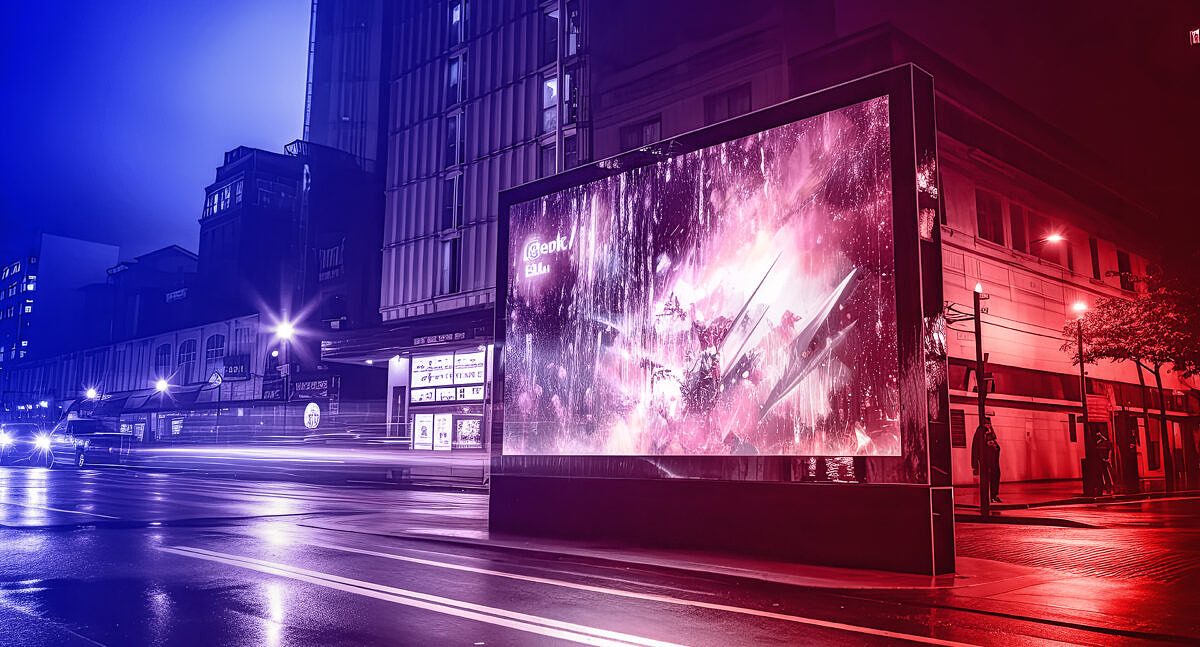DOOH & mobile: making digital out-of-home ads go further
Digital out of home (DOOH) enormously boosts advertisers’ reach – and not just during events like the European soccer championships or the Olympics. Learn here how to cleverly combine DOOH and mobile.

Digital out of home is growing fast
Digital out-of-home advertising has been popular among marketers for some years now. And it’s not hard to see why: digital ad spaces allow them to optimally reach a wide range of target groups in busy places such as train stations, shopping malls, and city centers. Not only does DOOH promise a wide reach, it also offers a lot of potential in terms of targeting. By combining DOOH and mobile, advertisers can access sources of personal data. In conjunction with mobile, DOOH is regarded as an indispensable targeting option in preparation for a post-cookie era.
A study conducted by Nielsen Media Research for the Institute for Digital Out of Home Media (IDOOH) confirms the increasing relevance of digital out of home:
In February 2024, digital out of home generated gross advertising revenues of 86.1 million euros – a year-over-year increase of 73%. The entire out-of-home advertising market recorded revenues of 210 million euros in the same month, which corresponds to a 38.6% growth compared to February 2023.
IDOOH study: smartphones deliver valuable data for measuring reach
The Public & Private Screens Study (P&PS) conducted by the Institute for Digital Out of Home Media is a key component for measuring the reach of DOOH campaigns. This market media study is updated on an ongoing basis and covers all DOOH advertising forms in Germany. Last year, it revealed impressive figures:
Digital out-of-home advertising generates more than 1.1 billion gross touchpoints per week with people aged 14 or older. That’s a net reach of 81%.
The latest version of the study is called P&PS 3.0 and will be published at the start of 2025. It draws on four large datasets to offer insights that are even more precise and extensive. A virtual panel combines a million anonymized address data with a million anonymized mobility profiles from app tracking data and navigation systems. These are complemented by a population-representative survey with around 20,000 participants, almost 40,000 on-site interviews, and data collected directly on the ground, including sales slips and passenger counts. The combined data enables advertisers to accurately plan and optimize their DOOH campaigns.
By leveraging big data and anonymized smartphone tracking data, you can precisely measure the reach of your out-of-home advertising. Smartphones send continuous signals. When these signals are anonymized and aggregated, they deliver valuable data on people’s movement patterns and where they spend their time. This makes it possible to accurately calculate the number of contacts for specific ad spaces. As an advertiser, you therefore know exactly how many and what kind of people are seeing a certain ad space.
DOOH and mobile: a powerful duo in cross-media marketing
Another advantage of DOOH is that advertising campaigns can be adapted in real time based on the latest data, making it possible to respond quickly to changes in the surroundings or the target group’s behavior. By incorporating spontaneous events and seasonal changes, campaigns can be made even more targeted. For example, ads in popular vacation destinations can be displayed more prominently and more frequently during the peak tourist season. DOOH campaigns implemented during major events, such as EURO 2024, give the soccer stadiums or main train stations of host cities access to a huge pool of data on various target groups. More and more brands are also integrating interactive elements into their DOOH mobile campaigns:
- As part of this year’s European soccer championships, Pringles released a limited edition of its potato chips and launched a creative, real-time campaign to go with it. This saw fans voting for the flag they wanted to see in Pringles ads – either by scanning a QR code displayed in 1,500 digital ad spaces or by casting their vote on social media.
- BVG, Berlin’s public transport company, embraced AR to promote its Jelbi app. As part of this campaign, people on the move could bring the characters in the company’s digital out-of-home ads to life using their smartphone.
- And BoraBora Studios has been attracting a lot of attention on digital advertising boards by encouraging people walking past or waiting for their bus to actively control a 3D character called Boba with the help of kinetic sensors. From rock paper scissors to cool dance moves, Boba imitates their gestures and movements, providing great entertainment value.
More than just a trend: DOOH and mobile are a forward-looking combination
Using smartphones and smartphone data to measure the reach of out-of-home advertising is a promising step for the advertising industry. After all, who could say no to more precise data, more flexible campaigns, and impressive growth figures? There’s no doubt about it: the boom will continue on an upward trajectory and the interplay between DOOH and mobile will significantly shape the future of out-of-home advertising.
DMEXCO 2024 will also be exploring the future of DOOH. Be there when the digital industry’s thought leaders come together in Cologne to showcase and discuss the latest marketing and tech trends – all inspired by this year’s motto: “Prompting the Future”. Get your ticket now!






